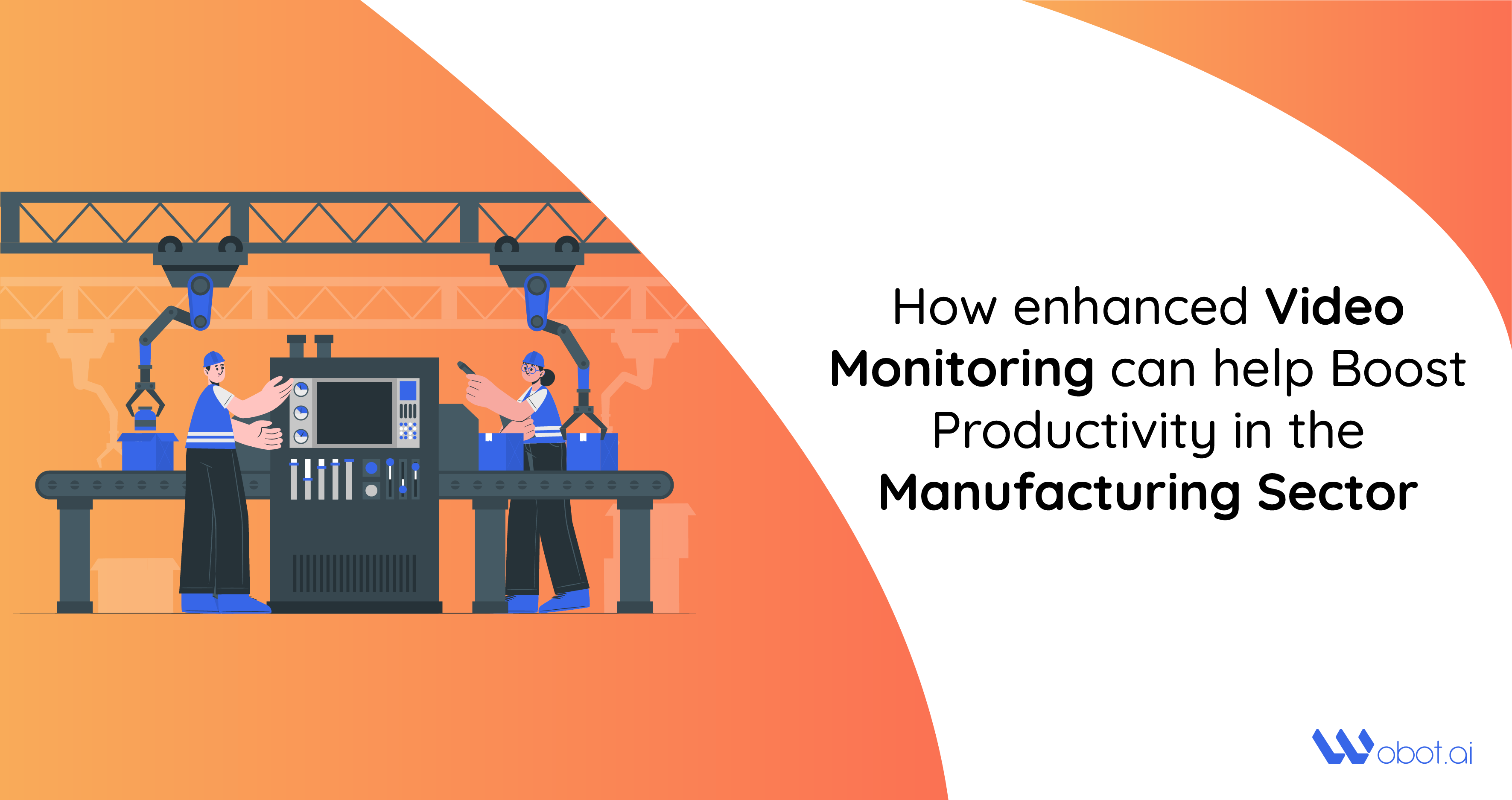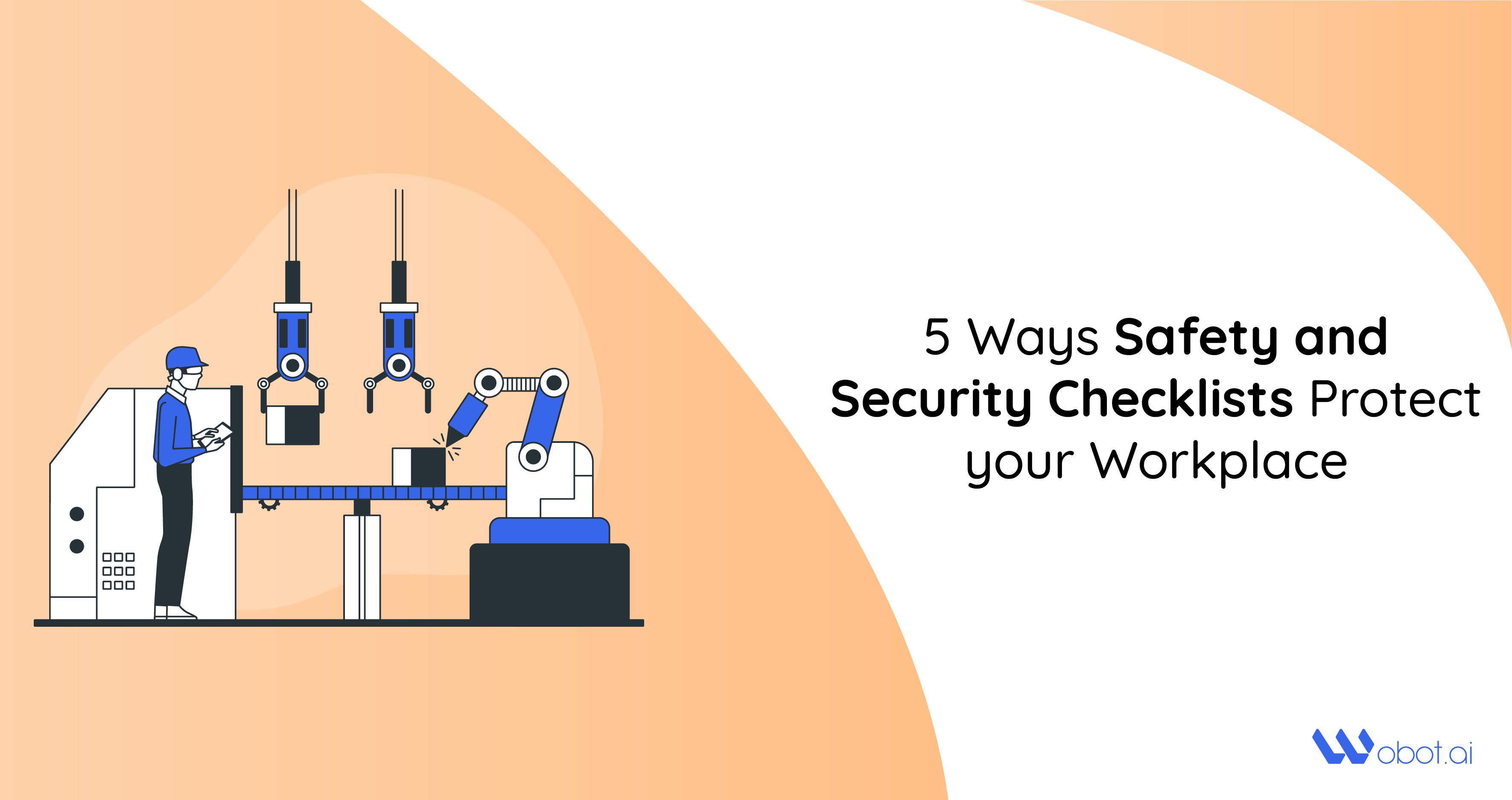How enhanced Video Monitoring can help Boost Productivity in the Manufacturing Sector
Written by Team Wobot

Video monitoring is an integral part of any manufacturing setup today especially because it offers excellent footage about the different aspects of the manufacturing process. How an organization utilizes this kind of footage is what enhances the real value of the entire monitoring process. After all, it requires substantial investment to install an effective video monitoring system that can bring in the expected returns in terms of optimizing processes and regulations at different levels. Optimum utilization of the video footage can be achieved by integrating artificial intelligence (AI) enabled video analytics with the monitoring system. It automates the entire video analysis by eliminating the much slower and ineffective human effort in this process.
Importance of regulations within a manufacturing plant
Inside a manufacturing plant, there are regulations for the different types of people who visit the place in varying frequencies. Such regulations need to be strictly complied with to maintain security and operational discipline within the plant and sustain the desired level of productivity. A manufacturing plant has huge machinery and equipment with cumbersome and often dangerous operational modes.
These involve huge capital investment and hence needs to be safeguarded while making the entire operational process error-proof and in compliance with the industry standards. Deploying human resources to ensure compliance and smooth-running is a thing of the past now. It is practically impossible for a supervisor to ensure complete safety and operational effectiveness of the processes. The only way to deal with these challenges without the need of a human supervision is through the installation of an enhanced AI-based video-monitoring system in the plant.
Predictive maintenance of equipment and machinery with video analytics
Machinery and equipment require regular servicing for good maintenance, more so with industrial machinery that undergoes extreme wear and tear. The use of micro-cameras and sensors to study those parts of the plant and equipment that humans cannot see, without dismantling the equipment, has now evolved to what can be called predictive maintenance. Analysis of objects based on their shape, size, colour, and other characteristics is done in real-time by video analytics.
In video analytics, detection of motion and studying patterns are critical functions that can analyse a video footage frame by frame and raise an alarm every time there is a break in the pattern. Today, drawing meaningful conclusions from the context of motions and patterns in video footage has advanced to a level where the alarms raised for abnormalities and breaks in the pattern are quite accurate. The integration of AI, Internet of things (IoT), Machine Learning (ML), and Deep Learning (DL) in Video Analytics is responsible for the high level of accuracy in the alarms that are raised to flag abnormalities in video footage.
Ensuring the safety of workers operating the machinery in a plant
Depending on the type of manufacturing plant, there can be different kinds of machinery and equipment such as large fans, boilers, containers for hazardous chemicals, etc. The other critical part of such plants is the heavy use of electric power to run the machinery and equipment. All these factors make a manufacturing plant a very dangerous place for the personnel working there and ensuring their safety and wellbeing is a top priority for the plant management.
In addition to the proper maintenance of all the machinery in the plant, strict compliance with the processes and regulations is extremely important for the safety and security of workers. However, laxity, complacence, and indiscipline are human shortcoming that need to be checked with strict discipline. The challenge of enforcing such discipline in manufacturing plants is a lot easier now with 24/7 video monitoring of every square inch of the shop floor.
Studying the recorded footage with AI-enabled video analytics can ensure total compliance with process and plant regulations. Many critical tasks can be tracked by AI-based platforms that can help prevent any mishap. Examples of such tasks include:
- Smoke/ fire detection
- Zone-wise restrictions based on uniform triggers
- Unattended critical machine stations
- Ensuring the proper usage of uniform, safety glasses, safety gloves, lab coats, etc.
This process compliance monitoring through AI-enabled CCTV cameras will not just save workers’ lives but also sustain optimum productivity in the plant, without dedicating a human resource for the job.
Use of video analytics to achieve Industry 4.0 manufacturing standards
Industry 4.0 technology standard refers to the 4th industrial revolution taking place currently. As a sequel to three earlier industrial revolutions, the 4th industrial revolution is helping in the adoption of remote process automation based on wireless and virtual data access on the internet. In addition to that, it is facilitating the adoption of smart next-generation technologies like AI, IoT, ML, and DL in the manufacturing process.
Video analytics is an integral part of virtual process automation that defines Industry 4.0 technology standards. It includes a network of cameras that record the video footage of a manufacturing facility 24/7, analyses it in real-time, and flags abnormalities instantly. A production line in a manufacturing plant has several types of equipment and machinery for producing a particular output. Industry 4.0 technology helps in the seamless synchronisation of these machines with minimum to zero human involvement other than manning the automation console.
The other key element of Industry 4.0 standards is process control in manufacturing plants, which depends on compliance with the operational processes. This can be achieved optimally with AI-enabled video monitoring and analytics that flags any violation or break in the process.
Conclusion
In any manufacturing plant, the major challenge is to achieve optimisation of output for which there needs to be total compliance with processes and regulations.
The use of AI-enabled video monitoring is highly effective in ensuring total compliance and process control. The other important outcome of video analytics is to achieve the maximum level of safety for workers inside a plant. Accidents and mishaps not just result in serious injuries and even death of workers but also affect the productivity of the plant in addition to giving the organisation a bad reputation.
A compliant workforce operating in a secure work environment will be much more productive than one that operates in an environment with inadequate monitoring and compliance.
Our solution, Wobot.ai, is an AI-powered platform that ensures the safety, hygiene, and workplace SOP compliance without the need of a human eye. It is installed in existing CCTV cameras.
At Wobot.ai, we know how important it is to maintain the safety and hygiene at manufacturing facilities. We also know it is not an easy task. It requires all-time monitoring and dedicated personnel to ensure that all safety guidelines are being adhered to, especially after COVID-19.
With our AI-powered video analytics, one can ensure that all safety and hygiene SOPs are being followed in the manufacturing facilities. No need for a human eye.
We provide pre-trained checklists and tasks built on global industry-specific standards and guidelines.
Wobot can help detect important safety and hygiene criteria, such as: – Uniform adherence – Glove’s detection – Hand wash compliance – Safety Gear Adherence – Productivity Monitoring (Loading/unloading, assembly-line task detection, etc.) – Machine Idle time – Face mask & Social Distancing Compliance
For more information, call us at +91 97111 82287 or drop an email at info@wobot.ai
Learn to identify, analyze and mitigate process deviations in real-time with video intelligence.
P.S. You’re signing up for value here. No spam. No overly promotional emails.
Related Blogs
See All
